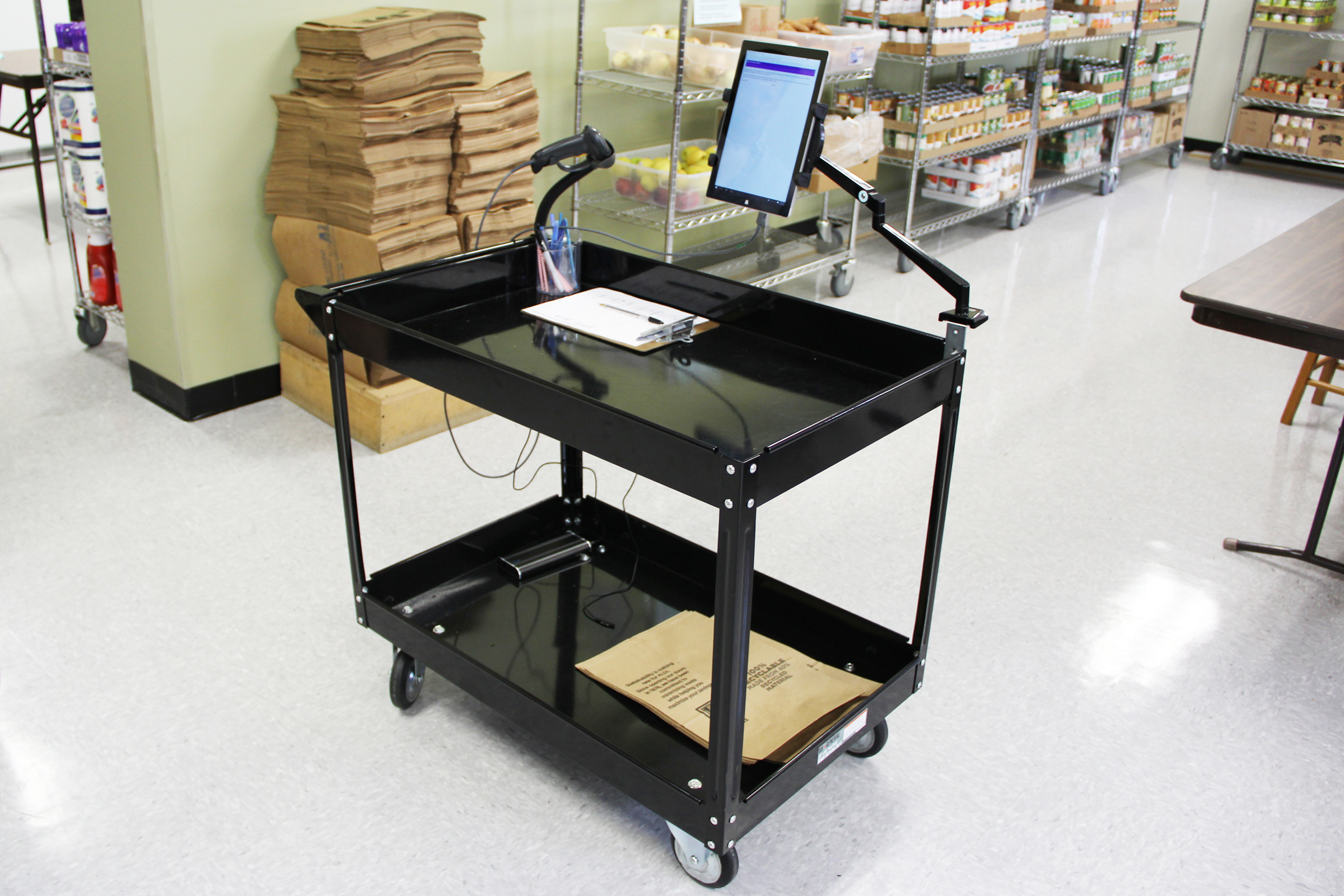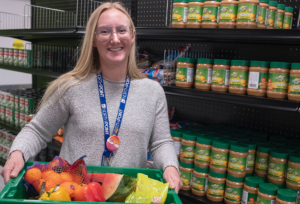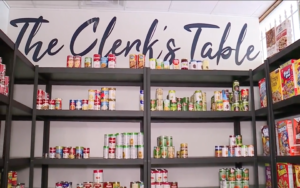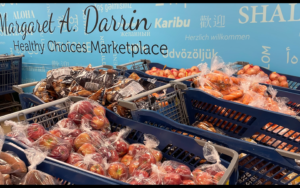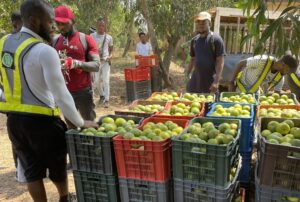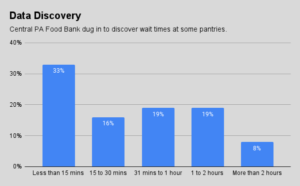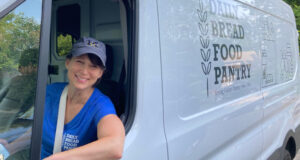Data and automation are not exactly dirty words at food pantries, but they are far from commonplace. A Des Moines food pantry network, however, is embracing both to help it nudge clients toward healthier options and also energize its advocacy efforts.
Like many food pantries, the Des Moines Area Religious Council, or DMARC, is trying to persuade its clients to choose healthier food. One strategy gaining popularity among pantries is to make healthier items count for less against a monthly allotment of points. DMARC has taken that concept and amped it up with automation that not only tracks clients’ points, but also provides a window into the overall success of such efforts.
DMARC affixed Microsoft Surface Pro tablets to shopping carts, which volunteers use to scan and track points as clients take items off the shelves. Clients can see how many points they have left on the screen as they shop. They can also choose to save their remaining points and come back later to use them up, which is helpful for clients who struggle to carry a full allotment of food home via public transportation.
More important, the automated point system has resulted in clients choosing healthier food. DMARC has two years of data to show that — on a scale of one to five, with one being the healthiest — the average healthy-food score across all demographics fell from 2.32 in September 2017 to 1.96 in September 2019. “We’re able to show that this model is leading clients to choose the healthier option,” said Luke Elzinga, Communications and Advocacy Manager at DMARC.

DMARC is also getting good results from a software program that gives a visual representation of where its clients are located, providing a big-picture look at food insecurity in its region, including how far clients need to travel to get to one of the 14 pantries in DMARC’s network and how often they visit. One way DMARC has used the tool is to figure out where to place the 28 mobile pantry sites it operates.
Even more effective is the dashboard’s use as an advocacy tool. By overlaying House and Senate district maps, DMARC can have very specific conversations with legislators about the scope of food insecurity in their regions. Usually, representatives are surprised by how many people use pantries, especially in the wealthier districts. “The big takeaway for me is that there are food pantry users everywhere,” Elzinga said.
With the dashboard, DMARC has become emboldened in its meetings with legislators to make specific asks to fill obvious needs in the communities. DMARC has also used the dashboard to show the impact that proposed changes to SNAP could have on different constituencies in the region.
When the government shutdown happened earlier this year, DMARC was able to show an unprecedented 10% decrease in food pantry usage during January because of an early distribution of February benefits. Then in February, the system recorded a huge 20% increase when SNAP benefits ran out early. “There are things we can point to in the data to show SNAP has a huge effect on the number of people we see,” Elzinga said.
The data visualization tool became a reality when a former board member with data analytics experience took it on as a personal project. The tool connects to the pantry’s intake software, which collects information on everything from demographics, to income level to home ownership, allowing the dashboard to show the scope of food insecurity on many different levels.
As DMARC has embraced more data projects, Daniel Beck has seen his previous role as assistant director of the food pantry network morph into a newly created position, Food Pantry Data Manager. One of his goals in that position is to get more volunteer data scientists involved, not just at DMARC but at other non-profit organizations in the area. “Data analytics is woefully underrepresented in the non-profit world in general,” Beck noted.
Greater data analytics expertise throughout the region, such as at local housing and energy assistance organizations, would help establish a more complete picture of the state of poverty in the region, Beck said. DMARC is reaching out to other organizations “not only to talk about further data collection, but also mergers of data sets to tell the broader story of the individuals that we all serve in the community,” he said.
ABOVE: A computer-assisted shopping cart has been helpful in getting clients to use their monthly points on healthier items.
